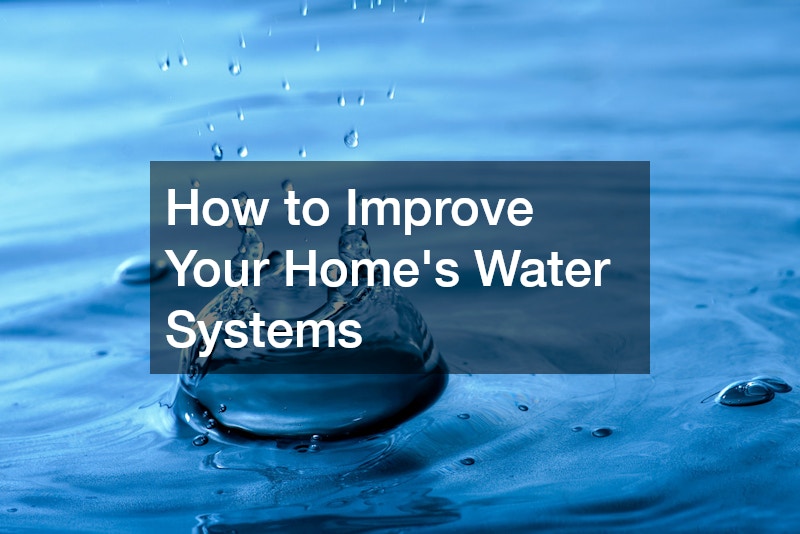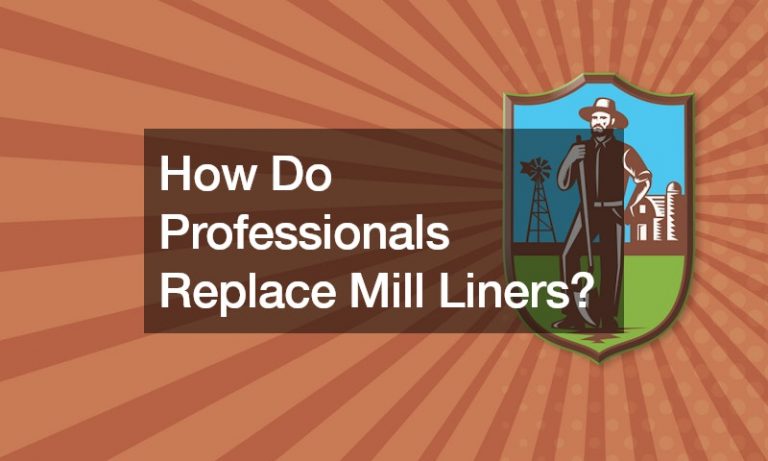How to Improve Your Homes Water Systems

Improving your home’s water systems can significantly enhance everyday living. Whether you’re washing dishes, watering the lawn, or taking a morning shower, you want a dependable and safe source of water. Unfortunately, many homeowners struggle with outdated pipelines, impure water sources, or a range of minor leaks that can add up to major headaches. Over time, these issues accumulate, requiring significant effort and expense to fix if they’re not identified and resolved early. By proactively focusing on your home’s water infrastructure, you can prevent many of these common problems before they spiral out of control.
While regular maintenance plays a central role in preventing emergencies, certain issues demand professional intervention. For instance, if you have reason to suspect widespread corrosion in your pipes, seeking expert help sooner rather than later can save time and money. Equipping yourself with knowledge about how your water supply works, and the various methods to upgrade it, empowers you to have more control over an essential resource you use daily. Better water doesn’t only add comfort; it can also safeguard your home from hidden damage, ensuring a healthier environment for you and your loved ones.
Understanding Key Components
Any home water system comprises several components working harmoniously to deliver a stable and clean supply. Each part plays a distinct role in ensuring reliable water flow throughout the house. Starting from the main supply line that brings water in from the municipal source—or from a personal well if you live in a rural area—these pipes distribute water to your showers, faucets, and appliances. If the pipes are old, they can be susceptible to blockages, leaks, or rust. When issues develop deep within the infrastructure, a straightforward fix might not suffice.
Sometimes, older homes rely on outdated materials for their piping. These materials may have been standard when the house was built, but modern technology offers superior alternatives. That’s why homeowners sometimes opt for a repiping service when they notice consistent plumbing failures or repeated leaks. Replacing worn-out lines can ensure that your family enjoys safe and steady water pressure without the threat of sudden bursts. Additionally, new pipes might resist corrosion more effectively and reduce the chance of harmful substances leaching into your water supply.
Another integral piece of the puzzle is your water heater. This vital appliance is responsible for providing hot water on demand for your kitchen, laundry, and bathroom needs. Over time, sediment can accumulate at the bottom of its tank, lowering efficiency and hastening its decline. Regular maintenance, such as flushing the system, extends the heater’s lifespan. If you neglect these basics, you may end up dealing with inconsistent temperatures, higher energy bills, or complete failure at an inconvenient moment. Knowing the heater’s age and design can help you plan for eventual replacement or more thorough servicing.
Pipes, faucets, fixtures, and water heating devices compose the tangible framework of the supply system, but that’s not the whole story. Water chemistry also affects performance and safety. Factors like mineral content and potential pollutants determine whether you might need water treatment solutions. When these aspects are properly balanced, you can reduce lime scale buildup, improve taste, and minimize health risks. All of these considerations highlight how each part of your system matters, and how a weakness in one area can affect the entire setup.
The Importance of Regular Maintenance
Regular checkups and preventative strategies can keep your home’s water systems functioning optimally. Unfortunately, many people only address difficulties when they become severe. The logic behind proactive care is that smaller tasks, done routinely, avert bigger problems and expenses in the future. Taking time to inspect pipes, faucets, and connections for leaks is a simple yet impactful habit. Even minor drips can escalate into mold issues or structural damage if neglected for months. Catching them early spares you the trouble of extensive renovations or high water bills.
In many households, the plumbing network is wide-ranging. This network services bathrooms, kitchens, and outdoor spigots. Because of this complexity, trouble can pop up in unexpected places. Busy homeowners often don’t realize there’s a problem until something dramatic happens, like a flooded area or a backed-up sink. Periodic drain cleaning offers a way to preemptively tackle clogs that slowly accumulate over time. Cooking grease and hair commonly stick to pipe interiors, narrowing the channel for water flow. Scheduling professional cleanings ensures that residues are flushed out before they cause a complete blockage.
Routine maintenance also factors into emergency prevention. If your house includes sprinklers for safety, you might be surprised how often homeowners forget about them until a malfunction arises. Seeking qualified assistance for fire sprinkler system repair can confirm everything is in operational condition. This not only meets legal or insurance requirements, but it also protects your property from potential tragedies. While these sprinkler lines aren’t used daily, they sit within your home’s broader network, which means they can degrade with time if you overlook basic upkeep.
Another scenario that underscores the role of prevention is contamination. If your water starts to taste odd or look discolored, it might indicate deeper issues such as corrosion inside the pipes or infiltration by external pollutants. Some people turn to stop-gap measures like buying bottled water, but this approach can become costly and isn’t environmentally friendly. By proactively addressing possible contamination risks through water treatment systems, you can maintain peace of mind about what flows from your taps. A little vigilance can safeguard both your health and your budget.
Water Purification Methods
When it comes to ensuring clean and safe water at home, you have several options. The best choice often depends on the nature of your local supply. If you rely on city water, you might already have some basic disinfecting measures in place, but you might still need to tackle issues like residual chlorine taste or specific minerals. On the other hand, residents in rural areas commonly look to a local water well company for their primary supply. In these cases, personalized solutions become more important, since each well can have unique challenges like high iron content or bacterial contamination.
Among the most popular household purification options is reverse osmosis. This technique forces water through a specialized membrane that traps contaminants, providing a fresh supply ideal for cooking and drinking. Many homeowners install smaller reverse osmosis systems under their kitchen sinks for convenience. Because these units often require filter replacements and occasional checkups, they add a layer of maintenance, but the payoff is excellent water quality. Other home filtration systems might rely on activated carbon, UV disinfection, or water softening to address issues like hardness or certain chemical compounds.
For broader coverage, entire-home water treatment systems can be installed where the main line enters the property. These solutions address quality concerns at the source, so every faucet delivers improved water. Many of these systems are tailored to deal with region-specific contaminants, like sediment, high mineral content, or particular toxins. If your municipality’s water supply is known for having elevated chlorine, you might select a filtration solution that specifically mitigates that. The benefit of a whole-house system is uniform protection, but it typically comes at a higher cost and more complex upkeep requirements.
Selecting the right purification method usually starts with water testing. A detailed analysis reveals whether you need to concentrate on chemical pollutants, microbial threats, or excessive hardness. Once you understand which contaminants are present, you can decide if a straightforward filter suffices or if you need multiple stages of treatment. Keeping your system in prime condition requires you to monitor performance over time. Filters might get clogged, membranes can wear out, and the effectiveness could diminish without regular checks. By staying informed and practicing consistent maintenance, you ensure that your chosen method continues working at its peak.
Addressing Source and Supply Issues
Quality water doesn’t just hinge on treatment; it also depends on the reliability of your supply lines. For those served by municipal water services, the main pipeline’s condition is outside your direct control, yet internal piping still needs care. When entire sections become compromised, some homeowners choose a repiping service to ensure that old, rusted lines are replaced with newer, more durable materials. This not only improves water quality but can also stabilize pressure levels.
Families in rural settings often rely on wells. Their biggest challenge is to guarantee that the well itself is protected from surface contaminants or natural seepage that can bring in bacteria and minerals. Regular inspections by a local water well company can confirm your source remains pure. Experts might recommend sealing cracks in the well cap, treating the water with disinfectants, or installing specialized filtration systems. These precautions extend well beyond the mechanical aspects of pumping water; they protect the health of everyone consuming it.
Another area to watch carefully is the distribution network within your property. Even if you have top-notch pipes in your home, a neglected yard line could allow seepage of sediment or chemicals. Occasional pressure drops can signal underlying issues in the main supply line. If you notice sudden or recurrent drops in water pressure, it’s a good practice to have a professional examine the line for leaks or blockages. Regular checks help prevent abrupt disruptions and can stop deeper structural problems from forming underground.
Preserving water quality also extends to how you manage waste or runoff on your land. Improper disposal of hazardous substances can leach into the soil, eventually contaminating a private well. Even simpler issues, such as failing septic systems, might taint nearby water sources. Keeping your well a safe distance away from septic fields and other risk zones is crucial. All of these steps combine to provide a stable, uncontaminated supply, whether you rely on a city infrastructure or draw water independently.
Vital Systems to Safeguard Your Home
Your home’s water network isn’t just about providing what flows from the faucets or into the washing machine. Other specialized lines protect life and property in different ways. Consider a built-in sprinkler system designed for fires. Typically out of sight, these sprinklers stand ready to activate in emergencies. But they can only function reliably if each component is maintained. When parts degrade or become blocked, the system fails in its vital purpose. Timely fire sprinkler system repair ensures that your home remains ready for unexpected fires, offering a critical layer of protection.
Your drainage network also plays a crucial role. Aging or clogged drains can cause backups, leading to unsanitary conditions and potential structural harm. Kitchen sinks, bathroom drains, and basement floor drains all connect to the main sewer line. A thorough approach to home protection might include scheduling professional drain cleaning at regular intervals. This habit reduces the risk of large blockages forming. If the water starts draining slowly, it’s usually a hint that internal buildup is forming and might result in a more severe clog. Acting on these early signs prevents inconvenience and chaos further down the line.
Another often-overlooked subsystem is dedicated to preventing damage from leaks or overflows. Some homeowners install leak detection sensors and automatic shut-off valves. These devices monitor water flow and can detect unusual spikes or continuous runs. If your pipes suddenly burst while you’re away, the sensor triggers the valve to close, curbing the extent of flooding. Combined with good practices like sealing cracks and insulating vulnerable pipe segments, these sensors add an extra level of defense against emergencies.
Pipes hidden within walls or beneath floors aren’t as conspicuous, but they’re just as important as visible faucets and showers. When small leaks develop behind drywall, you may remain oblivious until mold appears or your water bill mysteriously rises. Regularly checking these hidden segments, or performing moisture readings in walls, can pinpoint invisible drips. These steps are especially relevant in older homes, where decades of usage may have weakened connections. Maintaining both visible and hidden subsystems is a strategy that fortifies your home’s entire water infrastructure.
Improving Infrastructure and Upgrades
Over time, advancements in technology present new ways to enhance existing water systems. The decision to invest in upgraded components often comes down to cost, anticipated benefits, and the current condition of your infrastructure. If you experience recurring leaks, discolored water, or frequent pressure issues, upgrading can be more economical than constantly patching old systems. A plumbing repair that fixes a single crack in a corroded pipe might be a short-term solution. However, if several other areas are at risk of developing cracks, a larger overhaul might be the wiser choice.
Homeowners looking to modernize sometimes explore high-efficiency fixtures. Low-flow showerheads and dual-flush toilets help reduce water consumption without significantly compromising comfort. In parts of the country prone to drought, or simply where water bills are high, these innovations offer immediate cost savings. Some state or local programs even provide incentives, such as rebates, for installing water-saving devices. This approach benefits both your wallet and the environment, lowering your household’s overall footprint.
Other upgrades revolve around automation and real-time monitoring. Smart devices can track water usage and send alerts about leaks or abnormal spikes. These tools can help you spot problems early, potentially eliminating the need for extensive water restoration efforts later. While initial costs for these modern systems can be higher than traditional equipment, the long-term savings from avoiding water damage or wasted resources often balance out the expense. Smart technology can also interface with other parts of your home’s infrastructure, streamlining maintenance.
One useful upgrade focuses on boosting the overall water pressure if your home suffers from a weak flow. Pressure booster pumps, combined with a well-structured pipe network, can keep showers and faucets running at a steady rate. Alternatively, if extremely hard water is eroding your fixtures, water softening solutions might become top priority. By systematically addressing these challenges, you can bring your home’s water infrastructure in line with modern standards, ensuring more dependable performance and fewer emergencies.
Dealing with Potential Damage and Emergencies
Even the best-maintained water systems can run into trouble. Accidents happen, and natural disasters or severe storms may overwhelm typical preventive measures. When basements flood or pipes burst, the immediate concerns revolve around halting further damage and beginning cleanup. Some homeowners try to manage the restoration independently, but large-scale incidents often necessitate professional services. Water damage companies specialize in extracting water, drying surfaces, and addressing long-term ramifications like mold or compromised structures.
Another scenario requiring professional intervention arises after a fire. In addition to damage from flames, your home may sustain further harm from the water used in extinguishing it. A reputable water restoration company can assess the extent of moisture infiltration, remove compromised materials, and restore parts of the structure that remain sound. These specialists often collaborate with insurance adjusters, ensuring your claims process flows more smoothly. Sometimes, the lines that supply water to fire sprinklers also experience collateral damage during a blaze, adding to the restoration workload.
Flooding doesn’t just affect the areas you see. Water can seep behind walls and under floors, leading to hidden pockets of moisture that foster mold growth. This fungus thrives in dark, damp locations, and it can trigger health problems if allowed to spread. Addressing these threats quickly prevents further deterioration. In most cases, prompt extraction and thorough drying, followed by disinfection, go a long way to containing mold. Sophisticated tools such as moisture meters and infrared cameras help professionals pinpoint the exact extent of water intrusion.
In the aftermath of serious incidents, repiping service might be required if the existing system has suffered irreparable harm. Replacing damaged segments with new pipes not only restores normal water flow but also lessens the chance of future leaks stemming from weakened materials. Having the courage to tackle such issues decisively often spares you from repeated frustrations down the line. Emergencies can be stressful, but a measured, informed approach to cleanup and reconstruction sets your home on the path to quick recovery.
Strengthening Your Water Access
Securing dependable access to water isn’t just about the systems inside your walls. Many families also want outdoor faucets for landscaping, gardening, or recreational use. If you’re thinking of new installations outside, ensuring that your supply lines are well-insulated and sealed is critical. Outdoor lines are more vulnerable to freezing in colder climates, leading to bursts that can cause extensive complications inside. By burying lines to the correct depth and insulating above-ground spigots, you minimize the likelihood of weather-related damage.
Those who frequently rely on well water may also look at advanced solutions such as dedicated filtration or secondary storage tanks. If the power goes out during storms, wells typically stop operating because the electric pump isn’t running. Backup systems, like generators, ensure that you can still draw water for essential tasks. This foresight is particularly crucial if you live in rural areas far from immediate help. By creating an emergency plan that covers your water supply, you maintain self-sufficiency even when conditions aren’t favorable.
Balancing your household’s demands with environmental concerns can lead to better stewardship of local water resources. Some homeowners explore collecting rainwater for non-potable uses like gardening or washing cars. This approach reduces the load on municipal supplies, especially during dry spells. However, local regulations sometimes govern how and when you can harvest rainwater, so it’s wise to confirm the legality of such practices before committing. If you decide to install a collection system, make sure it’s not diverting water from areas where it’s needed, like natural streams or aquifers.
Finally, part of strengthening water access involves community awareness. If you suspect that your local infrastructure is aging or prone to pollution, speak with neighbors and local officials. Collective efforts often have more clout, and municipal authorities might prioritize upgrades if enough residents raise concerns. By sharing knowledge, discussing best practices, and even organizing joint water testing events, you elevate the quality of life for everyone in the area. When a whole community gets behind initiatives to safeguard water resources, the positive effects stretch beyond individual homes.
Managing Routine Tasks and Professional Services
Taking charge of regular upkeep tasks is fundamental to a sound system, but certain tasks inevitably call for expert involvement. For example, consistent performance checks of your water heater might fall into your do-it-yourself range if you’re comfortable adjusting settings or flushing sediment. However, once you spot significant temperature fluctuations or hear unusual noises, it’s prudent to contact a professional. The combination of high temperature and pressure inside the tank can turn small oversights into bigger hazards if mishandled.
Similarly, plumbing repair jobs that go beyond fixing a dripping faucet might exceed the comfort level of a weekend hobbyist. Issues like shifting pipes, major blockages, or significant corrosion often require specialized tools and expertise to resolve effectively. Attempting such projects yourself can lead to mistakes that cost more to fix later. An experienced plumber quickly identifies the real source of a problem, whether it’s an improperly fitted connection or an unseen break inside the wall. Professional input becomes indispensable when there’s a risk of exacerbating the issue through inexperienced handling.
When you suspect deeper contamination or trouble with water quality, a consultation with experts in water treatment systems can pinpoint the best approach to rectify it. They’ll likely run tests to measure hardness, pH, and any harmful substances. With that data, they’ll recommend solutions from single-stage filters to complex multi-stage setups that include reverse osmosis. While you can buy off-the-shelf filter units on your own, the expertise of a specialist often ensures that you choose a system targeted to the actual contaminants in your home. This level of precision is invaluable in delivering consistent, high-quality water.
Upgrading and maintaining your home’s water systems is both an investment in property value and a commitment to daily comfort. From the moment you turn on a faucet or hop in the shower, you can appreciate the difference that a well-managed system brings. Many people wait until serious problems appear before taking action, but adopting a proactive outlook can spare you from abrupt crises, extensive damage, and inflated utility bills. Consistent upkeep, accompanied by upgrades where necessary, keeps everything flowing smoothly while guarding your property from hidden hazards.








